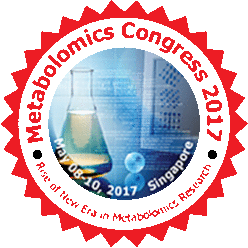Dominika Maciejewska
Pomeranian Medical University, Poland
Title: Is the eicosanoids profile a helpful marker in the diagnosis of NAFLD progression?
Biography
Biography: Dominika Maciejewska
Abstract
Nonalcoholic fatty liver disease (NAFLD) is a spectrum of liver conditions related to fat infiltration in this organ. The disease affects 20-30% of adults in developed countries and become important clinical entity. NAFLD, similarly to metabolic syndrome is associated with: Dyslipidemia, cardiovascular disease, obesity, type II diabetes and insulin resistance. There is a great need to find a noninvasive method which will be helpful in NAFLD evaluation. The study compared biochemical parameters and eicosanoid profile between first and second stage of hepatic steatosis and the effect of 6 months dietary intervention on various parameters. A group of 24 patients diagnosed with stage I and II of NAFLD according to Hamaguchi score were enrolled. Eicosanoids profiles were extracted from the 0.5 ml of plasma by using solid-phase extraction RP-18 SPE columns (Agilent Technologies, UK). The HPLC separations were performed on an Agilent Technologies 1260 liquid chromatography. We analyzed the following eicosanoids: Profiles 5(S), 6(R)-Lipoxin A4, 5(S),6(R), 15(R)-Lipoxin A4, 5(S)-HETE, 5(S)-oxoETE, 12(S)-HETE, 15(S)-HETE, 16(R)/16(S)-HETE, 9(S)-HODE and 13(S)-HODE. Patients, with stage I of NAFLD showed significantly higher level of HDL cholesterol (p<0.05), lower level of 5-HETE (p<0.05) and 9-HODE (p<0.05). After a six-month dietary intervention, all patients reported complete reduction of hepatic steatosis, which resulted in a significant decrease of the concentrations of all eicosanoids and key of biochemical parameters (ALT, AST, GGTP, HDL, insulin HOMA-IR, p<0.05). At the early stages of fatty liver the biochemical parameters may not be significantly impaired. In this case, the diagnosis was based on the non-invasive method, such as ultrasound, became more difficult. 9-HODE can be produced during non-enzymatic oxidation of linoleic acid, or by 5-lipoxygenase (5-LOX) conversion. 5-HETE is converted from AA by 5-LOX. It seems that 5-LOX activity is higher in patients with II degree of NAFLD than in patient with I degree of the disease. Furthermore, eicosanoid profile changes appear faster than changes in biochemical parameters. Our result shows that eicosanoids profile can be useful in NAFLD evaluation.

